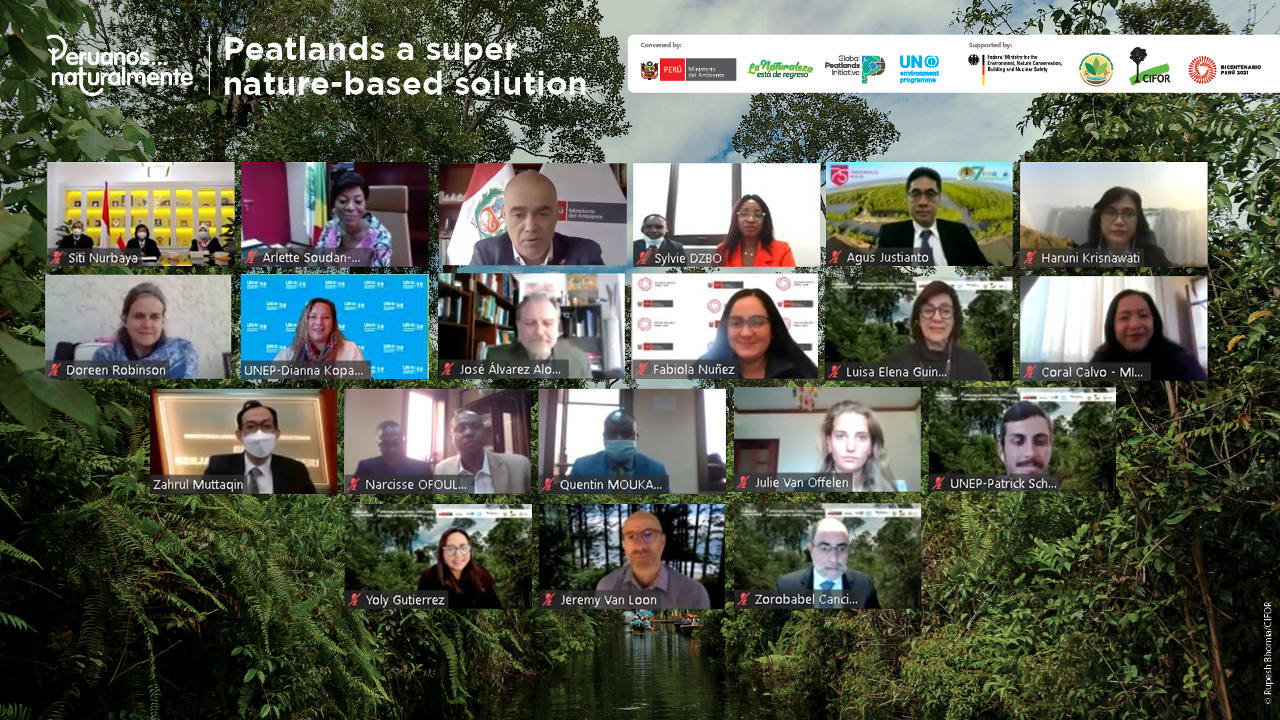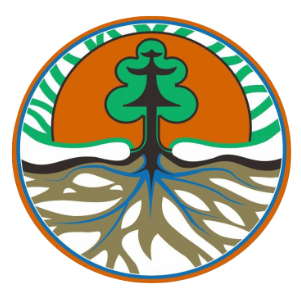
Conserving and managing peatlands sustainably not only offers massive benefits for the climate, but also supports national and local economies, said international environment officials and government leaders at a recent virtual event hosted by Peru, the U.N. Environment Programme, the Global Peatlands Initiative (GPI) and the International Tropical Peatlands Center (ITPC).
Peru, represented by Minister of Environment Gabriel Quijandria Acosta, was welcomed as a new member of the ITPC and together with Indonesia, Democratic Republic of Congo (DRC) and Republic of Congo, formalized a joint commitment to prioritize sustainable management of peatlands.
The four key tropical peatland countries exchanged information on efforts to protect high carbon ecosystems, which are considered vital for curbing global warming.
Peatlands in the Peruvian Amazon lowlands are estimated to store 20 billion tonnes of carbon and cover 120,000 square kms, an area the size of Nicaragua.
“It’s a significant milestone that Peru is building on a range of environmental initiatives by joining the ITPC, strengthening South-South cooperation to exchange knowledge, experiences, local science and practice, and promoting best practices for the protection and enhancement of tropical peatlands,” Quijandria said, noting that the Andean peatlands – the country’s most extensive carbon reserve – contribute substantially to the economy and the food and water security of coastal peoples, including Indigenous and local communities.
The center was launched three years ago in Jakarta as part of the GPI in collaboration with coordinating partners CIFOR, UNEP and the U.N. Food and Agriculture organization to facilitate an exchange of best practices for managing peatlands.
“Through these initiatives, countries can make well-informed decisions and develop management and policy options that minimize impacts on people and the environment and avoid dangerous social and climatic tipping points linked to peatland loss and degradation,” said Dianna Kopansky, who leads GPI, a partnership of 43 organizations and the four tropical peatlands countries present at the meeting, on behalf of UNEP.
Peru – like Indonesia, DRC and Republic of Congo – will explore options for including peatlands as a nature-based component of Nationally Determined Contributions (NDCs) under the U.N. Framework Convention on Climate Change (UNFCCC) ahead of COP26 climate talks to be held in Glasgow later this year.
NDCs are central to the U.N. Paris Agreement, under which countries agreed to prevent post-industrial average temperatures from rising to 1.5 degrees Celsius or higher by establishing greenhouse gas emissions and reductions targets designed to keep them in check. Countries are expected to update their 2030 targets to meet their commitments before COP26.
“The amount of carbon stored within 1 hectare of healthy peatland is equivalent to the annual emissions of 1,400 passenger cars,” said Doreen Robinson, head of the Biodiversity and Land Branch at UNEP, who moderated the “Peatlands as a Super Nature-Based Solution” panel discussions. “Peatlands offer a triple win for the climate, nature and people. They are the most carbon-dense terrestrial ecosystems on Earth, host an exceptional range of unique biodiversity and have supported human health and wellbeing for thousands of years.”
The goal of nature-based solutions is to support the realization of international Sustainable Development Goals, safeguard human well-being in ways that reflect cultural and societal values, enhance the resilience of ecosystems, their capacity for renewal and to provide services, she said.
Keeping tabs on the quantity of carbon stored in peatlands is a vital part of global efforts to curb global warming. Of all 169 peatland-containing countries, Indonesia has the fourth largest area after Canada, Russia and the United States. The Indonesian archipelago also features the largest tropical peatland area in the world.
Built up over thousands of years from decaying and waterlogged vegetation, worldwide, peatlands are equivalent to 3 percent of total land and freshwater surfaces, but store a third of the world’s soil carbon and 10 percent of global freshwater resources, according to the International Mire Conservation Group and the International Peat Society.
Degradation through conversion and drainage for agriculture has affected nearly 15 percent of all peatlands. These degraded peatlands, covering just 0.4 percent of global land area, contribute as much as 5 to 6 percent of global anthropogenic CO2 emissions annually, Kopansky said.
Indonesian peatlands are the fourth largest in the world, comprising about 36 percent of the world’s tropical peatlands and storing about 30 to 40 percent of global soil carbon deposits, said Siti Nurbaya, Indonesia’s Minister for Environment and Forestry.
Indonesia has implemented a wide range of strategies to manage peatlands, which traditionally are often drained and burned for agricultural purposes. Initiatives include guidelines for ensuring that plantation runoff canals retain a minimum level of water to prevent excessive drying. In addition, paludiculture and fire mitigation techniques have been introduced.
Peatlands form the backbone of Indonesia’s NDCs through which the country aims to reduce emissions 41 percent by 2030, Nurbaya said.
“The second NDC will be accompanied by the Roadmap on Mitigation and the Roadmap on Adaptation, Energy planning, and roadmap for phasing out coal power plants; and exploration of blue carbon including mangrove and coral reefs,” she said, adding that Indonesia aims to become carbon neutral by 2060.
As the largest tract of peatlands in the tropics, the Cuvette Centrale peatlands extend over 145,000 square kms, covering an area larger than England in DRC and Republic of Congo. One of the most carbon-rich ecosystems on Earth, they sequester 30 billion tonnes of carbon.
Peatlands are livelihood production environments for local communities and Indigenous Peoples, which means it is important that responses to environmental concerns do not obscure the economics of peatlands, said a written statement by DRC Vice Prime Minister Eve Bazaiba Masudi, who is also the country’s Minister of Environment and Sustainable Development.
“It would be important that policies for the sustainable production of non-drainage livelihoods are identified, contextualized and popularized,” according to her statement, which also said that the country supports conservation of peatlands in order to maintain their ecological functionality and economic enhancement of peatland conservation.
At COP 26, Republic of Congo will present new research findings on peatlands, highlighting their significance for biodiversity and their contribution to climate equilibrium.
They’re full of flora and fauna species — including endangered species — which are endemic in the Congo Basin, said Arlette Soudan-Nonault, Republic of Congo’s Minister of Environment, Sustainable Development and the Congo Basin. “These are important carbon stocks that represent a great potential for climate change mitigation — and this is a must in order to achieve the NDCs related to global objectives under the Paris Agreement.”
A technical session to be held later in the year will be designed to help GPI partners share, exchange knowledge and best practices.
“The goal is to help countries make well-informed decisions and develop management and policy options that minimize impacts on people and the environment and avoid dangerous social and climatic tipping points linked to peat land loss and degradation,” Kopansky said.
Peatlands as a Super Nature-Based Solution was held on July 5, 2021, supported by CIFOR.








